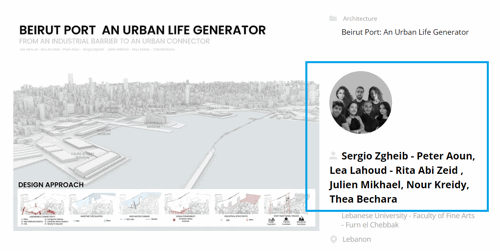WELCOME TO WONDERLAND - A VISITORS CENTER FOR NEUSCHWANSTEIN CASTLE

Project idea
The project is a design for a visitor center for Neuschwanstein Castle in Germany.
The goal of the project is to create a visitor center that can handle the large number of visitors to the castle and provide them with a modern visitor experience. The design of the visitor center involves analyzing the role of architectural icons, developing design concepts that consider the location, spatial program, and integration into the landscape, and using an iconographic approach that defines the meaning, symbolism, and form of the visitor center to harmonize it with the landscape.
The desired outcome is a building that enhances the history and magic of Neuschwanstein Castle without competing with it, and prepares visitors for the main experience of the castle itself.
Project description
Within the framework of this bachelor thesis, the iconographic approach serves as the central project solution concept for the design of the Neuschwanstein Castle visitor center. The thesis investigates how analyzing the castle as an architectural icon can lead to a deep understanding of its symbolic elements and the emotional impact on visitors. This approach guides the development of a respectful design that integrates harmoniously into the landscape, optimally prepares visitors for their experience, and represents a meaningful architectural addition without diminishing the castle's iconic status. The work demonstrates how the iconographic analysis influences the form, material selection, and spatial organization to achieve a coherent and impactful design that reflects the cultural and historical significance of Neuschwanstein, thus answering the main research question of the bachelor thesis.
Technical information
The design of the visitor center picks up on the conversation with the castle and continues it down to the smallest detail. This is particularly evident in the choice of materials, which takes up and reinterprets the light beige sandstone of the castle.
Corten steel was originally intended as a connecting element between nature, the surroundings and the building components in contact with the ground. However, this idea was developed further and combined with the idea of a patinated, slightly golden shimmering surface that reinterprets the sandstone in a modern way.
This reinterpretation of the materiality of the castle promotes and emphasizes the inevitable exchange between old and new. It creates a visual connection between the two buildings and creates a dialog between them.
The light golden patina of the sheet brass harmonizes with the warm hue of the sandstone and creates a subtle tension between tradition and modernity. The surface of the brass sheet changes over time and acquires an individual patina that further intensifies the dialog with the castle.
The choice of material is therefore an important part of the design concept and helps to ensure that the visitor center and the castle form a harmonious unit (you can see the detailed facade section on the last image).










